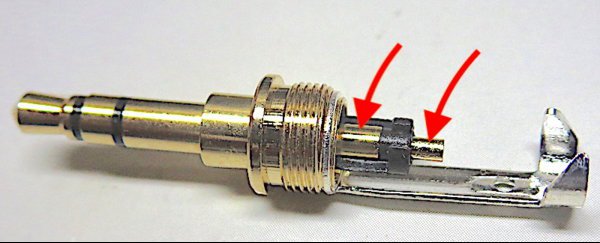- Joined
- Feb 24, 2015
- Messages
- 1,382
I need to replace the 3.5mm Jack on my headphones. I ordered this repair jack but I'm not sure how to go about soldering the wires to the cylindrical lugs. I guess just tin the wires and press them flat onto the lugs, but I fear enough heat will damage the plastic insulation around and isolating the lugs. Is there an official way to make this connection? the small lug is not hollow.
The lugs in question are marked with red arrows. I think I can handle the ground connection. I've repaired lots of stereo and mono jacks, but have not encountered lugs like these before.

The lugs in question are marked with red arrows. I think I can handle the ground connection. I've repaired lots of stereo and mono jacks, but have not encountered lugs like these before.

Last edited:


